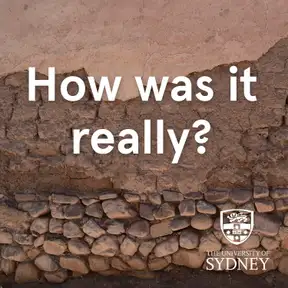When the pandemic plague hit, the first action taken by the government was to impose an emergency lockdown. It was known that the disease could pass from person to person, so movement and personal contact were strictly controlled. If you developed symptoms, if you had been in contact with someone who had symptoms, if you had been somewhere the disease was known to be present, you were isolated or forced to remain indoors. Australia 2020? No, this is Florence, 1630. But why were Florentines so frightened of bad smells? And why did the health office create a walking map of their city?
About Nick Eckstein - Nick Eckstein is Cassamarca Associate Professor of Renaissance History in the History Department at Sydney University. His research and publications emphasise the social and cultural history of renaissance and early-modern Italy. Recently he has published articles on the ways in which early modern Italians responded to plague. He is currently writing a book on the same subject, provisionally entitled Plague Time: Space, Fear and Emergency Statecraft in Early-Modern Italy. With Sophie Loy-Wilson, Nick is the regular co-host of How Was It Really. Reading for this episode Nicholas A. Eckstein, ‘Florence on Foot: An Eye-Level Mapping of the Early Modern City in Time of Plague’, Renaissance Studies 30, no. 2 (1 April 2016): 273–97, https://doi.org/10.1111/rest.12144.
About Nick Eckstein - Nick Eckstein is Cassamarca Associate Professor of Renaissance History in the History Department at Sydney University. His research and publications emphasise the social and cultural history of renaissance and early-modern Italy. Recently he has published articles on the ways in which early modern Italians responded to plague. He is currently writing a book on the same subject, provisionally entitled Plague Time: Space, Fear and Emergency Statecraft in Early-Modern Italy. With Sophie Loy-Wilson, Nick is the regular co-host of How Was It Really. Reading for this episode Nicholas A. Eckstein, ‘Florence on Foot: An Eye-Level Mapping of the Early Modern City in Time of Plague’, Renaissance Studies 30, no. 2 (1 April 2016): 273–97, https://doi.org/10.1111/rest.12144.




